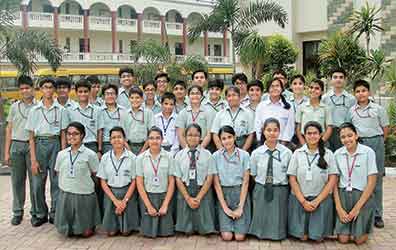Himani Tyagi
A generation ago, families imparted life skills and value education to their children. In India, the extended family and community also played an active role. Today, with nuclear families prevailing, busy parents rely on schools to impart life skills and value education to their children. Schools have integrated life skills education in their curriculum now, which has made it possible to find creative ways to communicate the importance of values to our children.
Coaching is a powerful process that leads people to gain insights, break out of unproductive habits and achieve goals. It involves partnering with the coachee (person being coached) in a thought-provoking, creative process to maximize his/her potential. Coaching is a collaborative, solution focused, result-orientated and systematic process in which the coach facilitates the enhancement of performance, life experience, self-directed learning and personal growth of the coachee. The coach offers supports by listening, asking powerful questions, challenging the status quo, assisting in creating an action plan, motivating and being there for the coachee without advising, mentoring, or tutoring. Coaching has gained immense popularity in the corporate sector. With a lot of corporate schools in the field now, this concept of coaching didn’t take long to be imbued into the school system. Peer coaching involves students coaching each other. This can be a very effective way of teaching life skills to adolescents. Since they are beginning to develop a strong sense of self, working towards their chosen goal on their own with peer support boosts their self-confidence. Peer coaching positively structures the interaction between teenagers such that they engage in mutually enhancing conversations. They get an opportunity to learn from real life situations. A life skills project based on peer coaching was envisaged for an eighth grade classroom to foster the spirit of cooperation and good will. A small report on the experience follows.
 The buddy system
The buddy system
The coaching process was demonstrated to the students in the classroom before initiating the project. In the demonstration classes, a student was coached by the teacher-coach regarding an issue for 30 minutes and the other students observed and learnt. Thirty-eight students participated in the study. The average age of the students was 14 years. The duration of the project was six months. Essentially, students were paired with other students and each pair was called ‘Buddies’. One student was to coach the other towards achieving a goal. The pair was to connect with each other for an hour every week, either virtually or in person. The coach’s task was to listen, ask powerful questions, challenge unproductive behaviour, assist in creating an action plan, motivate without advising or tutoring. They maintained a record of their conversations in their life skills notebook which was assessed by the life skills coach on a regular basis. The entire group of students would discuss their small and big achievements, encourage and share the learnings with their classmates during the weekly life skills class. They would also discuss the obstacles and issues they faced. The coachee pursued the goal for three months with the coach’s support and then the roles were reversed for the subsequent three months.
One encouraging observation was that students did not choose academic related goals alone but also aimed towards value based goals like being more patient with siblings, developing study skills, anger management, etc. It was heartening to see young minds evolve and discover themselves as they participated in the experiment. There were initial hiccups – such as not getting along well with the assigned buddies – which were addressed and resolved during the weekly life skills class in an amicable and constructive manner under the guidance of the teacher-coach. Such experiences gave the children invaluable experience in conflict resolution and management. The discussions in the weekly life skills classroom were eagerly awaited as they were based on the students’ own situations. They derived inspiration as well as lessons from these discussions. They continued to inspire, support, and motivate each other throughout the session with minimal interference from the teacher-coach. The teacher-coach facilitated and guided the process and intervened only when absolutely needed. They were exposed to numerous important life-skills like goal setting, decision-making, creating an action plan, listening patiently, asking the right questions, giving feedback, conflict management, compassion, communication and selfless giving. They derived a lot of satisfaction and confidence from achieving the desired goal. Almost all the students achieved their goals within the stipulated time of three months, except for a few who took a little longer.
It is great that there is increased focus on value enhanced life skills education in schools these days. No one can truly succeed in life without the right balance between values, life skills, and academic education. Interestingly, a lot of students realized that they could achieve their goals because they had the right attitude and life skills. In a nutshell, peer coaching was a powerful as well as an enjoyable learning experience for the students.
The author is a certified Professional Youth Coach. She is also a certified ‘Better Brains for Babies’ trainer. She pursued post-doctoral research in the field of Stress Biology from University of Sciences, Philadelphia. Currently, she is employed at DLF Public School, Sahibabad as a Youth and Career Coach. She can be reached at himanityagi23@gmail.com.
Related articles
Learning from one another
When everyone’s a learner and teacher
The peer advantage
Redefining roles
